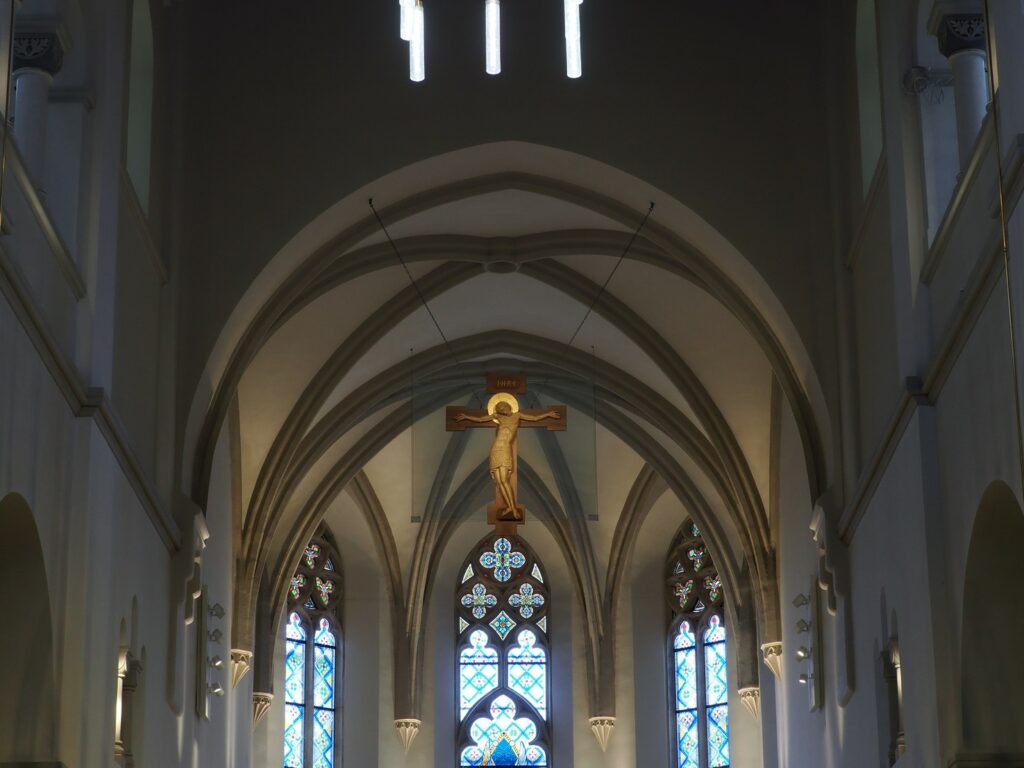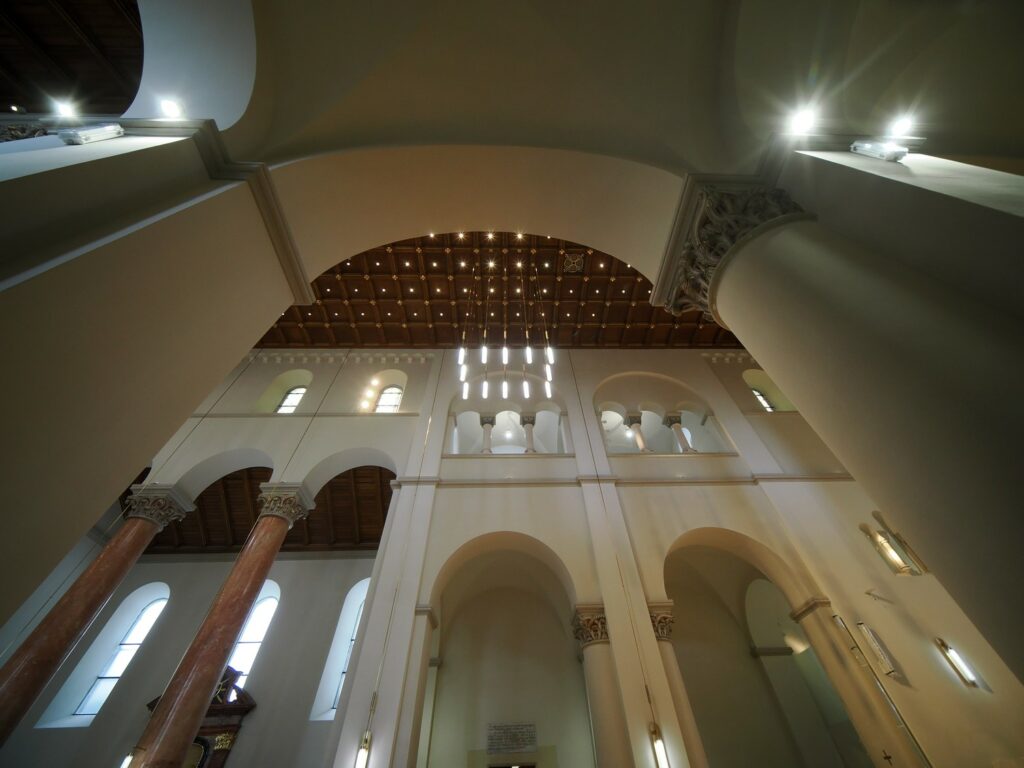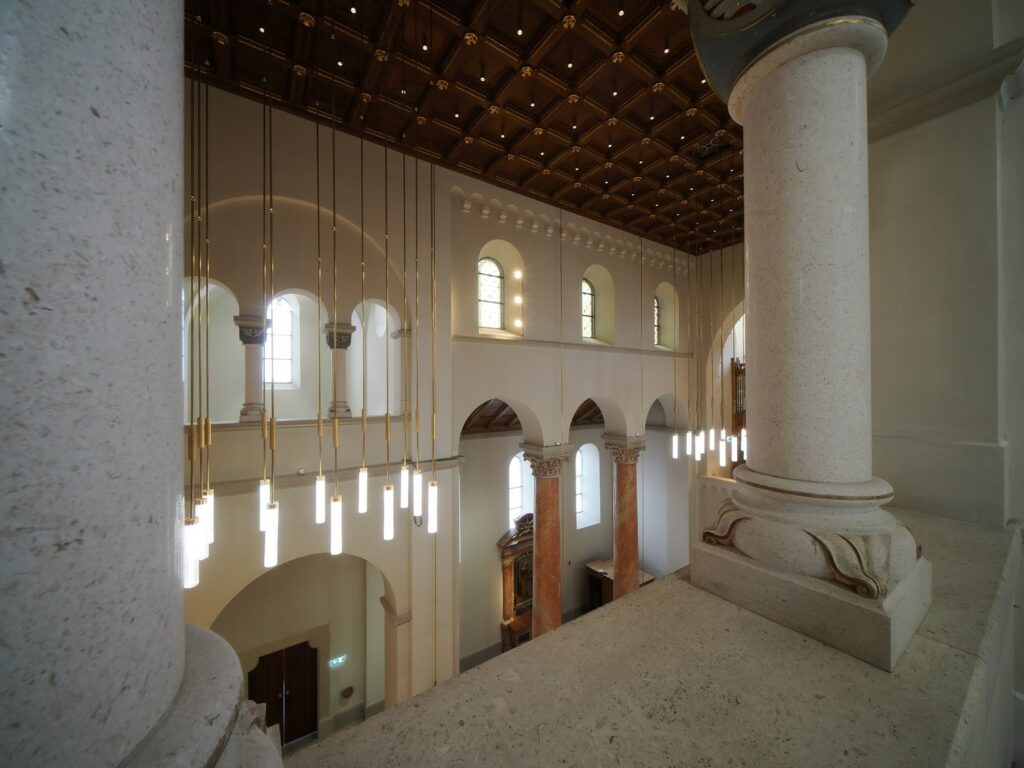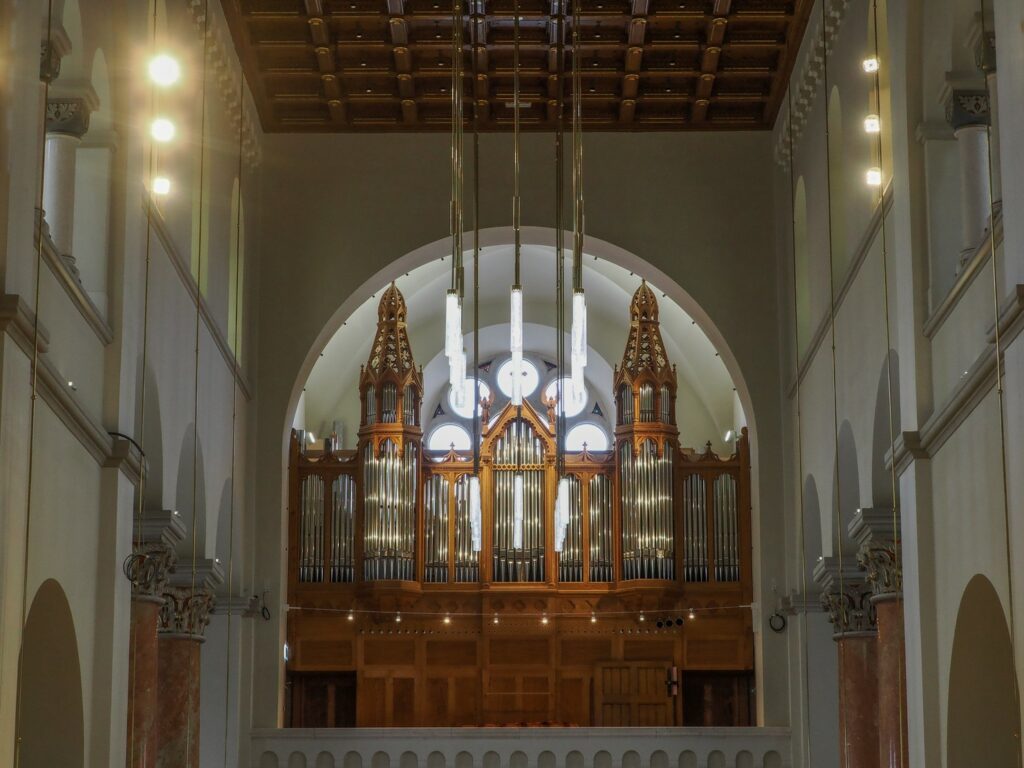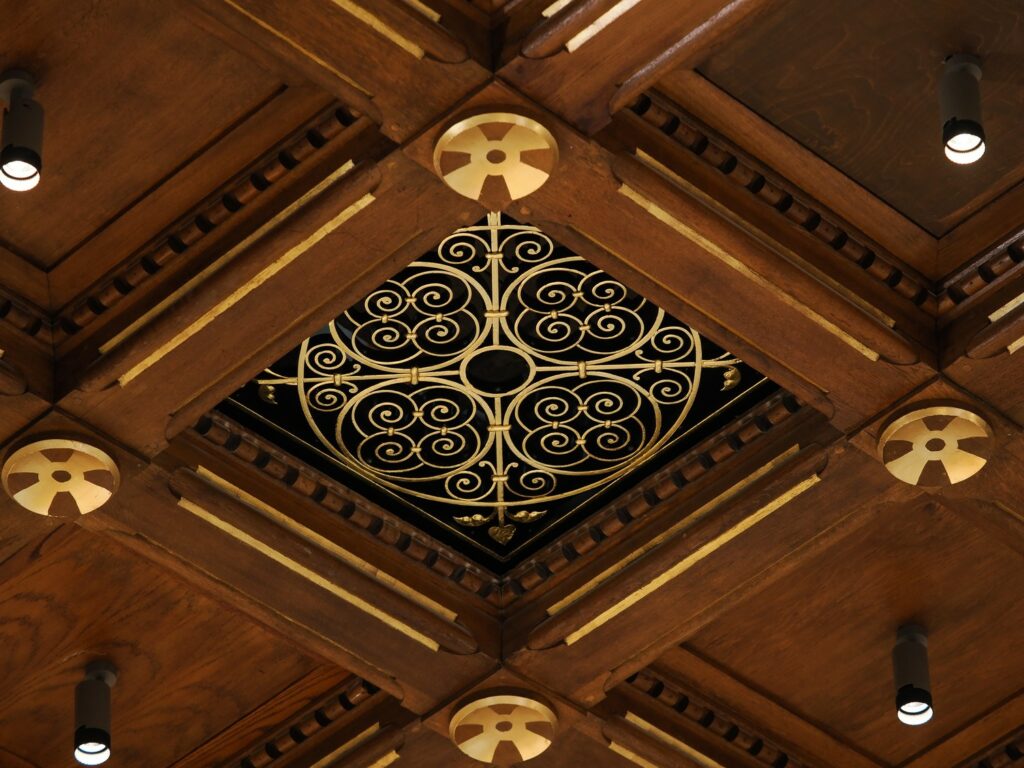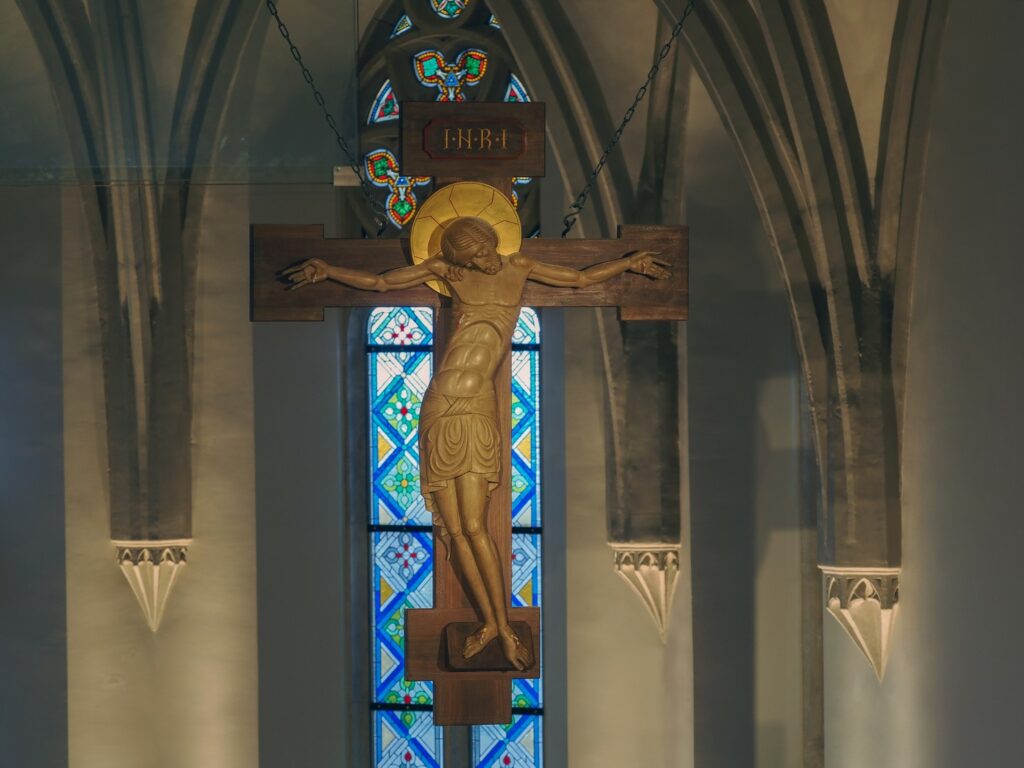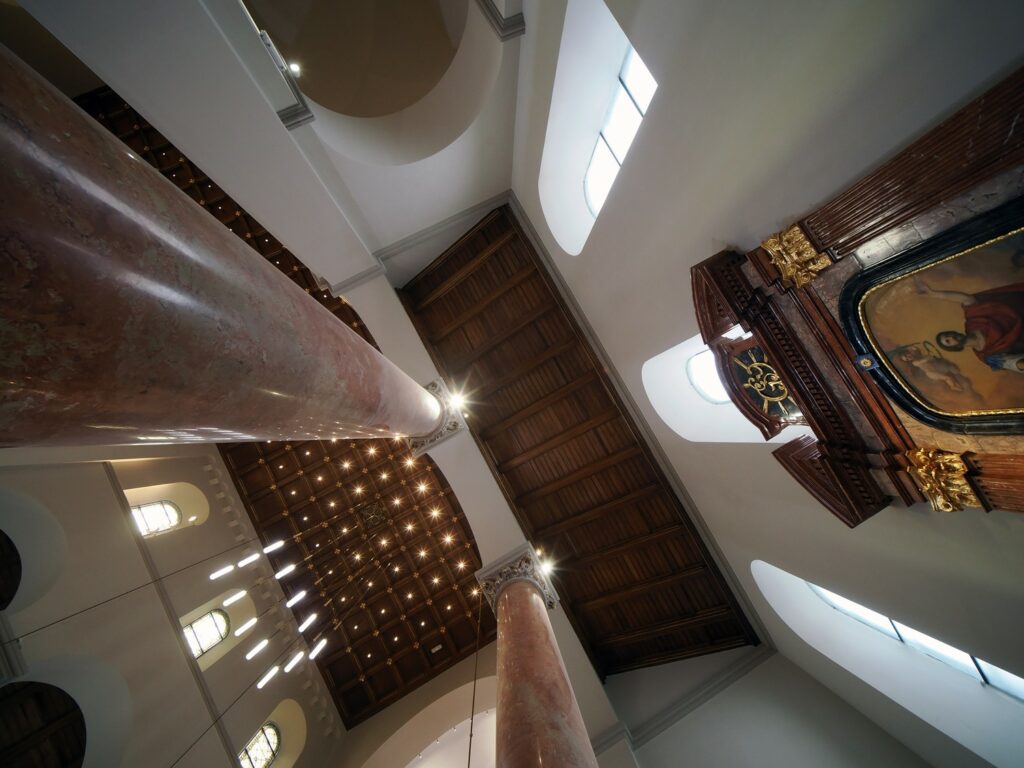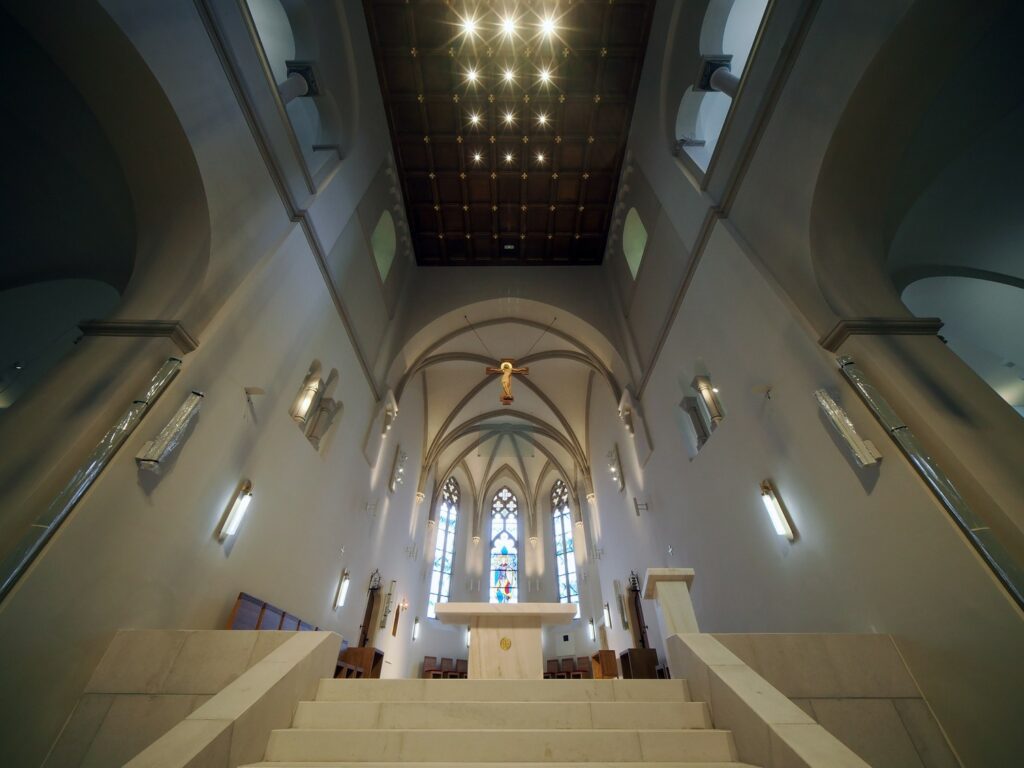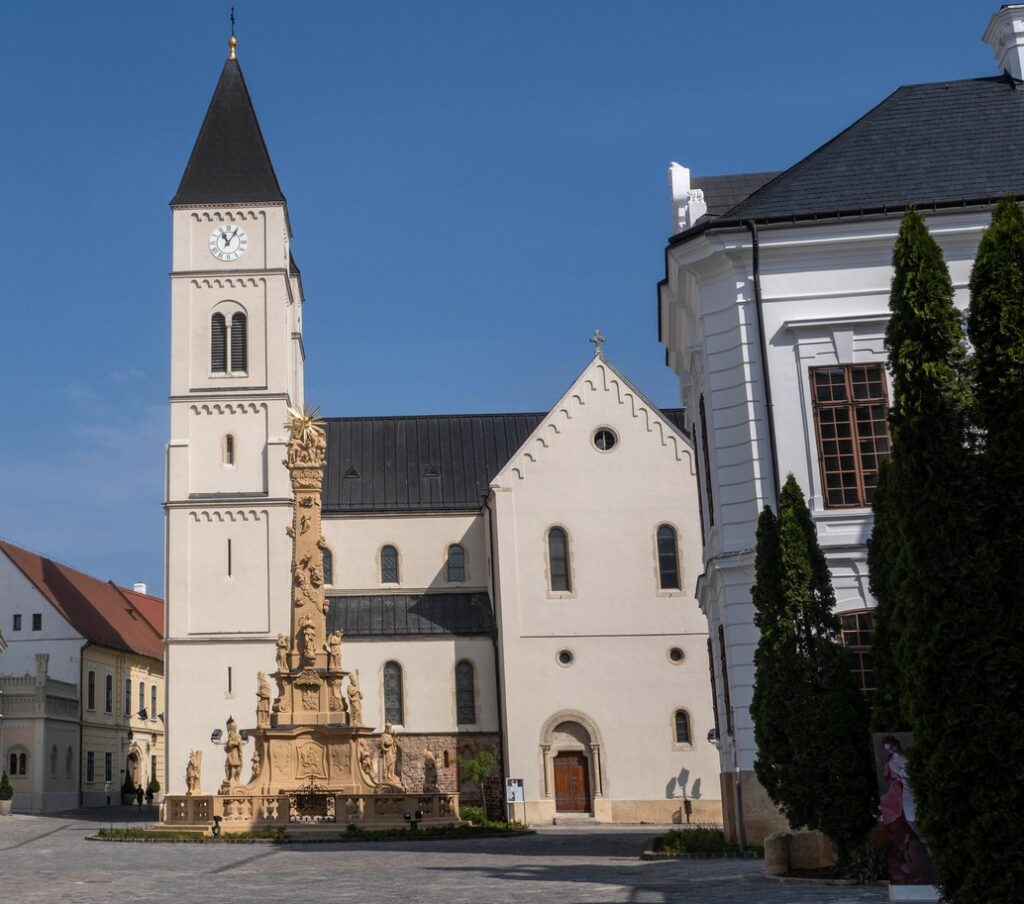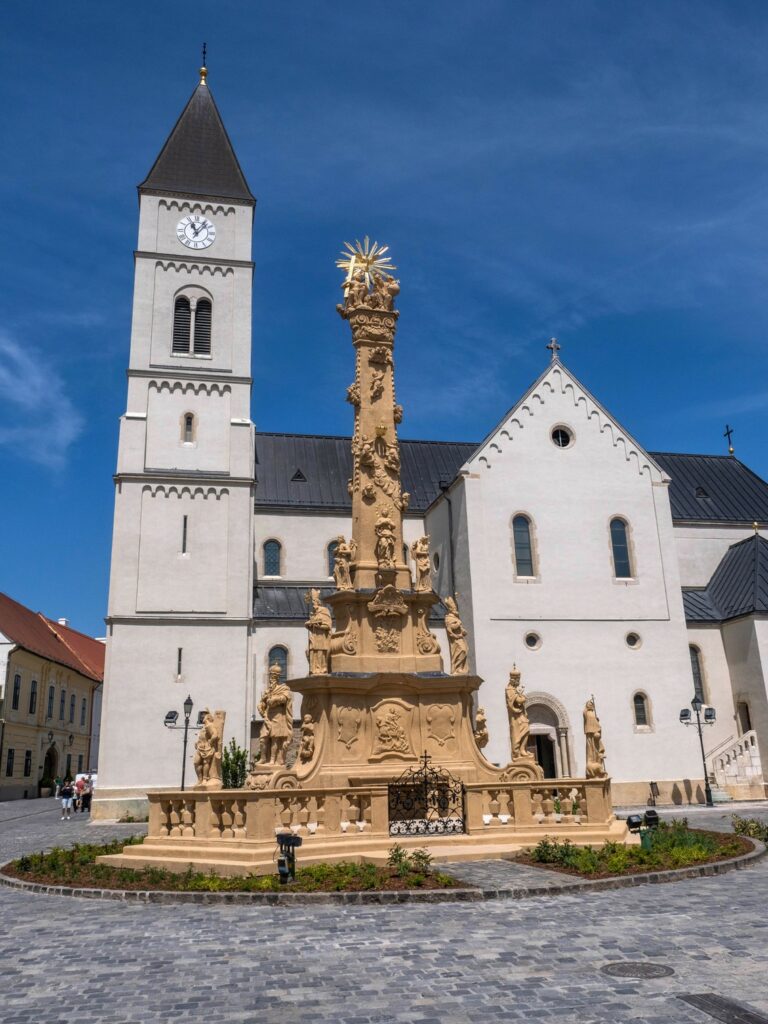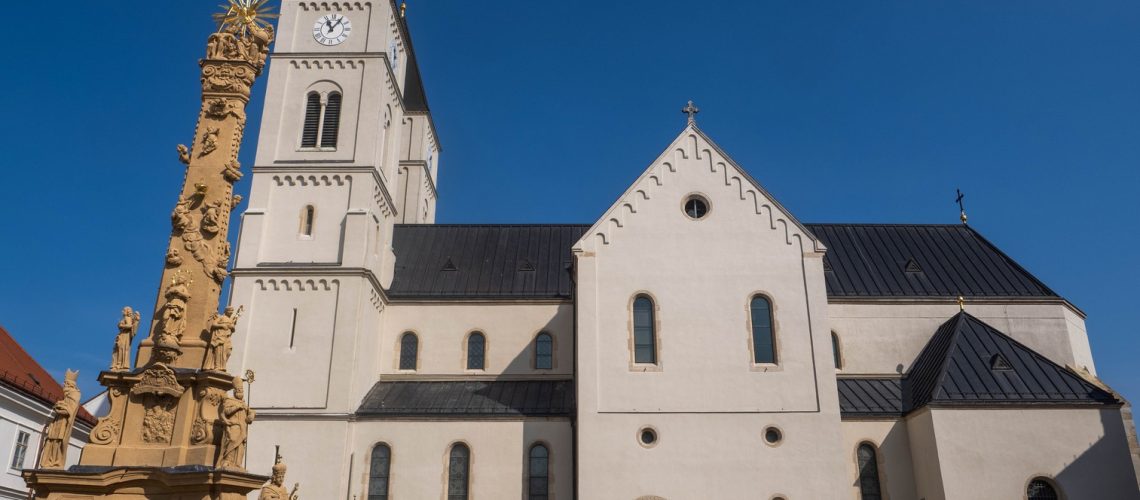The cathedral, located at the highest point of the Castle Hill, is a building of medieval origin that incorporates historicist, neo-Romanesque, and neo-Gothic elements. The Diocese of Veszprém was among the first to receive its endowment letter from King St. Stephen. The construction of the repeatedly remodelled cathedral dates back to between 1030 and 1040.
The builder and patroness of the 11th-century St. Michael's Cathedral was Queen Blessed Gisela. According to the customs of the time, the Bishop of Veszprém held the right to crown the queen and also served as the queen's chancellor.
According to documents from the 14th and 15th centuries, the relic of St. George's head was kept here, brought to Hungary by King St. Stephen in 1008.
The cathedral was plundered and set on fire in 1276. In 1552, the castle fell into Turkish hands, and the fleeing diocese could only return in 1628. In 1704, imperial cannon fire caused significant damage to the building. Following the turbulent times, it was clear that the castle district needed a large-scale, comprehensive reconstruction, which Count Imre Eszterházy initiated with the Baroque-style reconstruction of the cathedral.
At the beginning of the 20th century, under the commission of Bishop Károly Hornig and based on the plans of Sándor Aigner, the cathedral was renovated in a historicist style, featuring rich paintings and unified furnishings. The cathedral was elevated to the rank of basilica minor in 1981, and since 1996, it has housed the relics of Queen Blessed Gisela.
